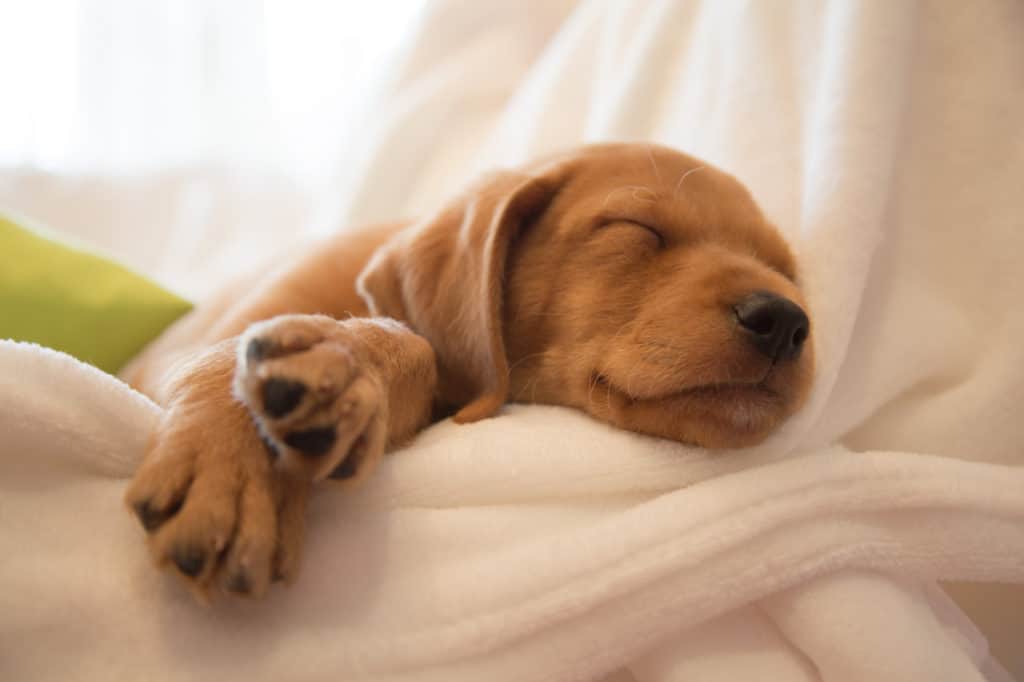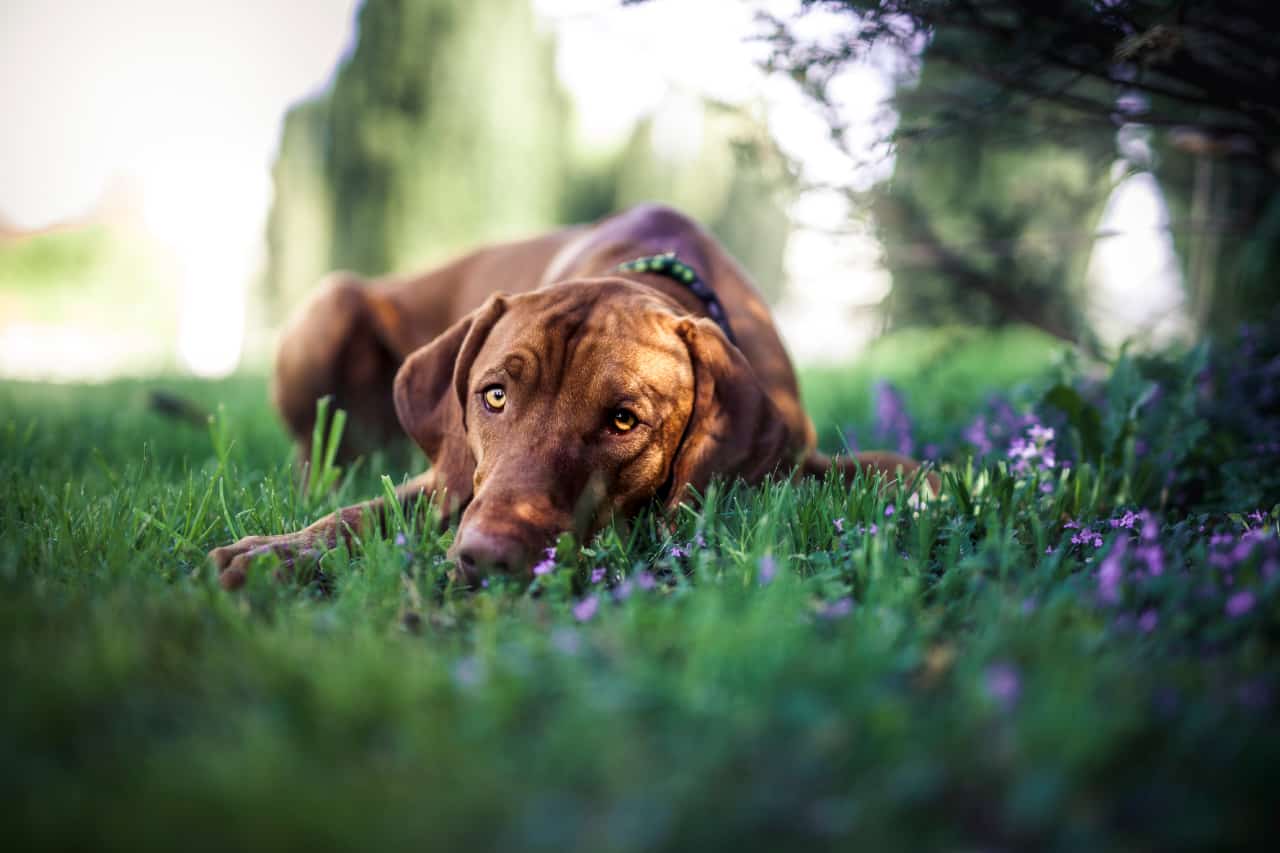Only in English could there be so much confusion about how to refer to a Vizslas coat. Enthusiasts like to use the correct terminology, and so what is right? Do Vizslas have fur or hair, and what is the difference?
It is correct to refer to Vizslas as having hair or fur. There is no dictionary or biological difference between hair and fur. English speakers commonly refer to ‘fur’ as the soft, dense coat and ‘hair’ as longer, coarser hairs. This usage is individual, and no official distinction exists. Speakers may use these terms interchangeably.
This article will consider the meanings and differences of the terms ‘hair’ and ‘fur.’ It will also look at qualities of a Vizslas coat and several fascinating characteristics.
Hair And Fur Defined
English does not differentiate between ‘hair’ and ‘fur.’ All land mammals have hair. English usage, though, is somewhat complicated. It is generally accepted that ‘fur’ refers to soft, fine, almost wool-like hair, which grows on specific animals, usually close to the skin. ‘Hair’ refers to coarser, longer hair that may exist by itself or develop on top of the fur. English speakers often use the terms interchangeably.
What Is Hair Or Fur?
Biologically there is no distinction between hair and fur. Both are made up of keratin, which is modified skin cells, originating from hair follicles in the skin’s dermis. The hair grows through the epidermis to form a skin covering. Hair can take on many different forms. A Vizsla’s nails, a rhinoceros’ horn, a pangolin’s scales, and a porcupine’s quills are all made of hair.
Stages Of Hair Growth
There are four stages of hair growth:
Anagen stage: this is the stage of active hair growth.
Catagen Stage: the stage when the hair has finished growing.
Telogen Stage: this is a dormant stage where the follicle rests.
Exogen Stage: the dormant hairs loosen from the skin and begin to fall out.
Why Do Different Dog Breeds Have Different Coat Length?
Different breeds of dogs have different growth cycles. For example, a poodle has a very long anagen stage, and owners will often need to cut the poodle’s hair. Vizslas have a short anagen stage resulting in a short coat. Dog’s hair growth cycles are related to seasons and may grow longer in winter than a short anagen stage in summer.
Topcoats And Undercoats
Many dogs have different layers to their coats. They may have a soft, thick undercoat covered by a topcoat that consists of longer guard hairs. Undercoats are denser, having more follicles per square inch than the topcoat. The undercoat has a shorter anagen or growth stage that allows the undercoat to be grown quickly during colder months. Dogs with a double layer coat usually work and live in cold climates.
A Vizslas Coat
A Vizsla has a short, dense coat with no undercoat. The coat lies close to the body and is described as russet or golden red. There are Vizslas with wirehaired coats, but these are generally regarded as a separate breed and are called Wirehaired Vizslas. Vizslas’ short coats mean they need protection from the cold and cannot work in frigid conditions.
Why Do Vizslas Have Short Hair?
Vizslas were developed in Hungary, which has cold, snowy winters, so it is surprising that Vizslas have such short coats. A short coat is beneficial for a dog running through the scrub where burrs may hook in a long coat. A Vizsla, which does water retrieval, may be easily and quickly dried. Vizslas were held in great esteem in Hungary and were considered part of the family, and lived in the warm home. Hence, a long coat was not a priority during the breed development.

Vizsla’s Coats And Temperature Control
Vizslas are active dogs and love to hunt. They have short coats, which can be a problem in icy conditions. Owners need to be aware and make provision for warming their dog if they are hunting during winter. There are neoprene vests that can assist with keeping the Vizslas core temperature stable. Wirehaired Vizslas cope better with cold conditions than their shorthaired cousins.
How Many Whiskers Does A Vizsla Have?
Whiskers are thick, coarse hairs that grow from deep roots. They are known as vibrissae. The roots are attached to nerves and give the dog additional cues regarding the environment. Whiskers are very sensitive and can detect minor changes in air currents, giving the dog extra information about the size and distance of objects. Whiskers may grow at various places on a dog’s face – on the upper and lower lip, chin, and above the eyes. Vizslas can have as many as twenty whiskers on either side of their faces.
Do Vizslas Really Clean Themselves?
Everyone is aware that cats are fastidious creatures who clean themselves regularly and Vizslas share this characteristic. Vizslas have a rough tongue, which they use to lick themselves. Fortunately, due to their very short coat, they do not get hairballs as the hair does not clump together in the digestive system.
Caring For A Vizsla’s Coat
A Vizslas coat does not require a lot of work. A quick brush once a week with a soft brush is all that is needed. A rubber curry comb may be used to detach and remove any loose hair. The owner may wish to groom his Vizsla more often as it is a valuable bonding time. Bathing a Vizsla too frequently should be avoided as natural oils will be stripped from the coat.
Why Do Vizslas Not Smell?
Vizslas do not exude a typical dog smell. The absence of smell is due to their genetics and the fact that they habitually clean themselves. Vizslas have short coats that dry quickly and therefore do not give that distinctive wet dog smell.
Swimming And Coat Care
A Vizsla that has been swimming in the ocean or a swimming pool should be rinsed off using clean water to avoid the salt or pool chemicals causing skin irritation. Wet dogs must be well dried to prevent fungal infections.
Conditions Which Could Cause A Vizsla To Smell
Any condition which causes the skin to become inflamed can result in a dog having an offensive odor. Food and environmental allergies, parasitic, viral, and bacterial infections can all cause skin and gland reactions, producing a smell. One of the most typical causes of a smelly Vizsla is a yeast infection. Tooth issues can cause bad breath, and anal gland problems result in a distinctive, overpowering smell.
Maintaining Ear Health In Vizslas
Yeast infections commonly occur in the ears of dogs that swim a lot. Vizslas enjoy the water and often work in the water when hunting. It is essential to ensure that the Vizsla’s ears are clean and do not retain moisture in the ear, allowing yeast and other fungal and bacterial infections to develop. Ear cleaners can be bought from pet shops and veterinarians and used after the dog has been in the water.
A Vizsla with a pungent smell around the ears should be examined. If the ears are red or oozing brown discharge, then it is essential to consult a veterinarian. It is necessary to obtain the correct medication to control the infection, which may be fungal, bacterial, or mixed.
Conclusion
Vizslas can be described as having either hair or fur. Both terms may be used correctly to refer to any dog’s coat. Individual owners will have a preference for using one word instead of the other. Vizslas have short coats that are easy to manage and do not smell unless there is an infection. Vizslas clean themselves regularly by licking their coats.
References
https://www.diffen.com/difference/Fur_vs_Hair
http://www.todayifoundout.com/index.php/2010/02/there-is-no-difference-between-fur-and-hair/
https://www.hungarianvizslaclub.org.uk/owning/care/
https://www.grammarphobia.com/blog/2019/04/fur-hair.html
http://www.vcaweb.org/download/AMERICA_Isborn_1959.pdf
https://www.vcaweb.org/breed/owning_a_vizsla.shtml
https://www.scientificamerican.com/article/what-is-the-difference-be/

